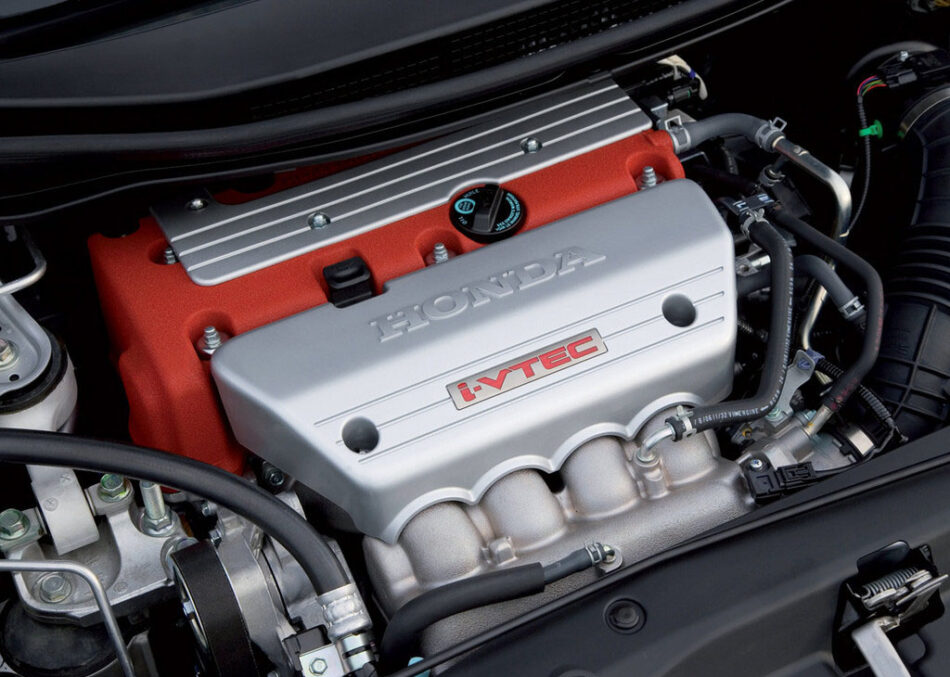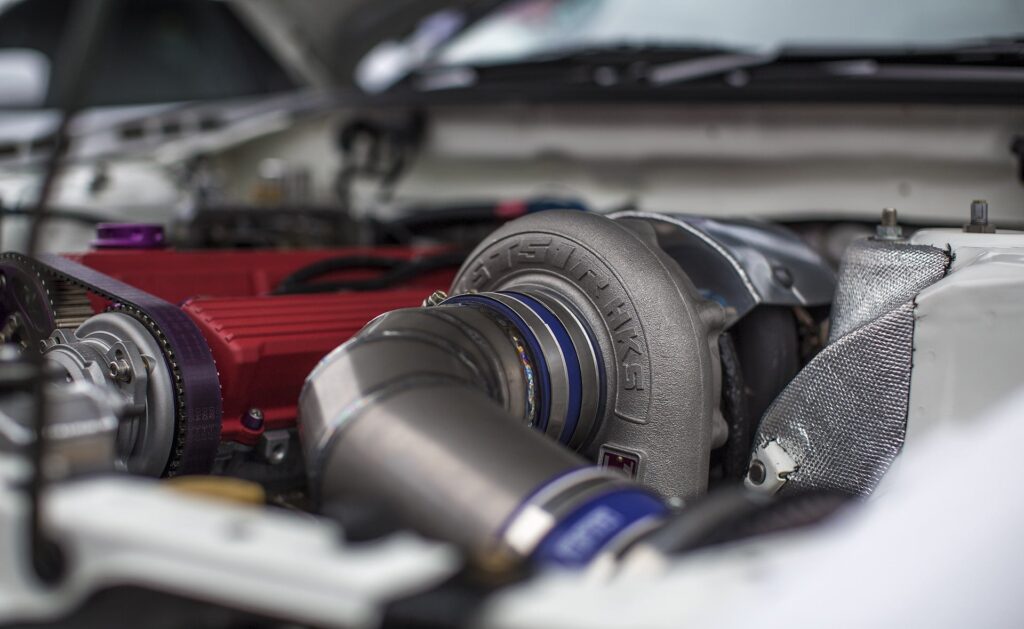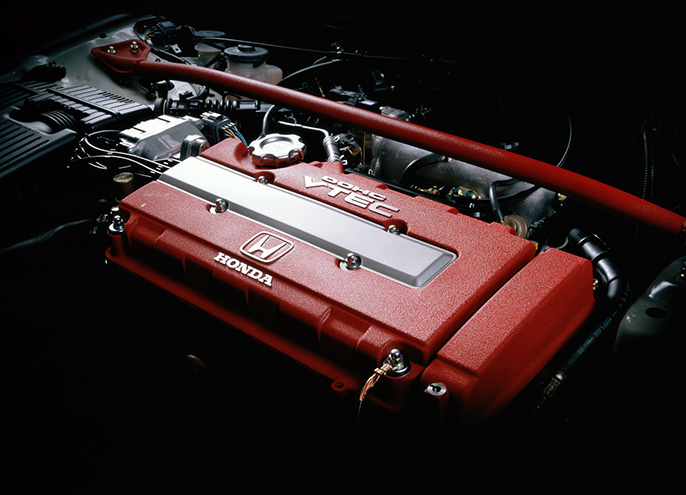VTEC vs. Non-VTEC Engines: What's the Difference?

Honda revolutionized engine performance and power delivery with the development of VTEC (Variable Valve Timing and Lift Electronic Control) technology.
What distinguishes VTEC engines from their conventional equivalents, sometimes known as Non-VTEC engines? Let’s start this fascinating conversation.
To understand the differences between VTEC and Non-VTEC engines, you must first understand how an internal combustion engine works.
The timing of valve opening and closing in a traditional engine is frequently fixed, limiting performance and efficiency under different conditions. This is when VTEC comes into play.
Honda’s VTEC technology, launched in the late 1980s, transformed the world of internal combustion engines.
VTEC technology, at its core, allows for rapid adjustments of valve timing and lift. This means that the engine can change cam profiles to optimize for different RPM ranges.
VTEC operates in a more fuel-efficient mode at lower RPMs, prioritizing smooth and efficient running. However, as the engine’s RPM rises, the system switches to a high-performance cam profile for a burst of power.
Non-VTEC engines, on the other hand, are generally fitted with fixed valve timing and lift profiles, limiting their versatility.
While non-VTEC engines can provide power and efficiency, they tend to thrive in a narrow RPM band. This can limit their performance potential in situations requiring more flexibility.
VTEC engines excel at balancing power and efficiency under a variety of driving scenarios. The ability to convert between different cam profiles seamlessly allows VTEC-equipped vehicles to provide a thrilling driving experience when desired while retaining fuel efficiency during everyday travel.
While non-VTEC engines are less flexible, they can nonetheless provide outstanding performance within their prescribed RPM range. They are frequently chosen for certain applications requiring constant performance in a given band.
VTEC vs. Non-VTEC Engines - Benefits of VTEC Powerplants

Let’s explore the manifold benefits of VTEC engines:-
The most notable advantage of VTEC technology is its capacity to provide power on demand.
VTEC engines ensure that you have the extra horsepower you need when accelerating or overtaking without sacrificing efficiency under typical driving circumstances by effortlessly shifting between multiple cam profiles based on RPM.
This makes highway overtaking and navigating steep inclines a snap.
When the high-performance cam is activated, the dynamic cam profile switching of VTEC engines allows them to generate a surge in both torque and horsepower.
This results in faster acceleration and response times, providing a thrilling driving experience, particularly in sportier automobiles.
Contrary to popular assumption, VTEC engines are able to achieve a pleasing balance between performance and fuel efficiency.
VTEC engines may run in a fuel-efficient mode at low RPMs by optimizing valve timing and lift, ensuring you save gasoline while cruising and idling.
Wide powerbands are a strength of VTEC engines, enabling responsive and comfortable driving over a range of RPMs. The flexible nature of VTEC engines ensures a comfortable and secure driving experience whether you’re negotiating city traffic or cruising along the highway.
Due to its adaptability, VTEC technology can be used in a wide variety of automotive applications. VTEC engines can be tweaked to fit the unique requirements of various models, from performance-oriented cars to compact cars, providing flexibility in power delivery.
In VTEC engines, the changeover between the economical and high-performance cam profiles is seamless. This guarantees an effortless shift in power delivery for the driver, improving comfort while driving and getting rid of any jarring acceleration emotions.
In VTEC engines, the changeover between the economical and high-performance cam profiles is seamless
VTEC engines are renowned for having a higher maximum rev range than conventional engines without sacrificing dependability. They are favored by driving enthusiasts due to their high-revving performance, which is a result of this trait.
VTEC vs. Non-VTEC Engines - Disadvantages of Non-VTEC Engines
One of the main downsides of non-VTEC engines is their narrow power band. These engines typically work best within a narrow range of RPMs, which implies that their power delivery and performance can suffer at lower or higher RPMs.
In some driving conditions, this constraint can result in lower acceleration and responsiveness.
When compared to VTEC-equipped engines, non-VTEC engines may struggle to offer high-end performance. Non-VTEC engines may lose power as the RPMs rise, resulting in less thrilling acceleration and a lower potential for overtaking at higher speeds.
While non-VTEC engines can achieve enough fuel efficiency within their ideal RPM range, they may struggle to do so at lower or higher RPMs.
This can lead to inefficient fuel usage during city driving or highway cruising, as RPMs may not be aligned with the engine’s sweet spot.
Non-VTEC engines lack versatility, in contrast to VTEC engines, which can fluidly transition between multiple camshaft profiles for varying driving circumstances.
This can lead to poor performance in instances where power supply requirements fluctuate, such as when accelerating quickly or climbing steep inclines.
While non-VTEC engines can deliver consistent performance within their defined RPM range, their fixed valve train techniques may not be as adaptable as VTEC engines. This may result in increased wear and tear on specific engine components over time, reducing long-term reliability.
Non-VTEC engines may have less aftermarket performance tuning potential than VTEC engines. The lack of dynamic adjustment and fixed valve profiles limit the extent to which engine performance can be improved beyond its original specs.
The context of use determines whether non-VTEC engines are appropriate. They might be better in some situations than VTEC engines in terms of adapting to a variety of driving conditions, such as offering constant performance in a set RPM range.
Non-VTEC engines may have less aftermarket performance tuning potential than VTEC engines.
This brings us to the question – which one suits you best?
The decision between VTEC and Non-VTEC engines is mostly influenced by driving requirements and personal preferences.
A vehicle with VTEC can be your best option if you’re looking for something that provides both thrilling acceleration and cost-effective operating. On the other hand, a Non-VTEC engine can be more appropriate for your needs if you prefer simple styling with dependable performance within a certain RPM range.
Factors to consider when deciding between VTEC and non-VTEC engines
There are a number of crucial aspects to take into account while choosing between VTEC (Variable Valve Timing and Lift Electronic Control) and non-VTEC engines.
Based on your driving requirements, preferences, and priorities, you ought to make your choice based on the following:
Performance Needs
VTEC engines may be appealing if you’re looking for enhanced power delivery and higher RPM performance. Acceleration and overall performance can be improved by using VTEC, which can produce more horsepower and torque at higher engine speeds.
A non-VTEC engine might be adequate if your driving style is primarily focused on mid and low-range driving, especially if you value low-end torque for activities like towing or city driving.
Fuel Efficiency
By adjusting valve timing for various engine loads and RPM ranges, VTEC technology can help to increase fuel efficiency. It presents benefits for both highway and city driving.
Non-VTEC engines may have more straightforward valve timing setups that enable improved efficiency at set speeds or within certain RPM ranges. Choose the technology that best suits your driving style by taking into account your normal driving conditions.
Cost Considerations
Due to the advanced technology involved, vehicles with VTEC engines may have a higher initial purchase price.
The production of non-VTEC engines is typically simpler and less expensive, which could lead to less costly car purchase prices.
Maintenance and Repairs
While VTEC engines may perform better, they may also have more complicated parts that call for more specialist upkeep and repairs. Consider carefully if the area around you has access to trained mechanics and diagnostic tools.
Non-VTEC engines are typically more straightforward and may be less difficult and expensive to maintain and repair.
While VTEC engines may perform better, they may also have more complicated parts that call for more specialist upkeep and repairs.
Driving Style
A VTEC engine can suit your driving preferences better if you crave to accelerate swiftly and frequently at higher RPM ranges.
However, drivers who value predictability and smoothness may prefer the more linear power delivery that non-VTEC engines can offer.
Personal preference ultimately has a big impact. Test-drive both engine types’ performance, reactivity, and driving characteristics to get a feel for them.
And there you have it: a breakdown of VTEC vs. Non-VTEC engines—the dynamic combination that powers Honda vehicles. So, which one is best for you?
The shape-shifter offers both power and efficiency. Or the dependable companion?
Also related articles ..

Are Turbo Engines Reliable
Are Turbo Engines Reliable? – Find out everything about Turbocharged engines.

Which Engines Are Most Reliable
Which engines are most reliable with all the facts you’ll ever need to know

